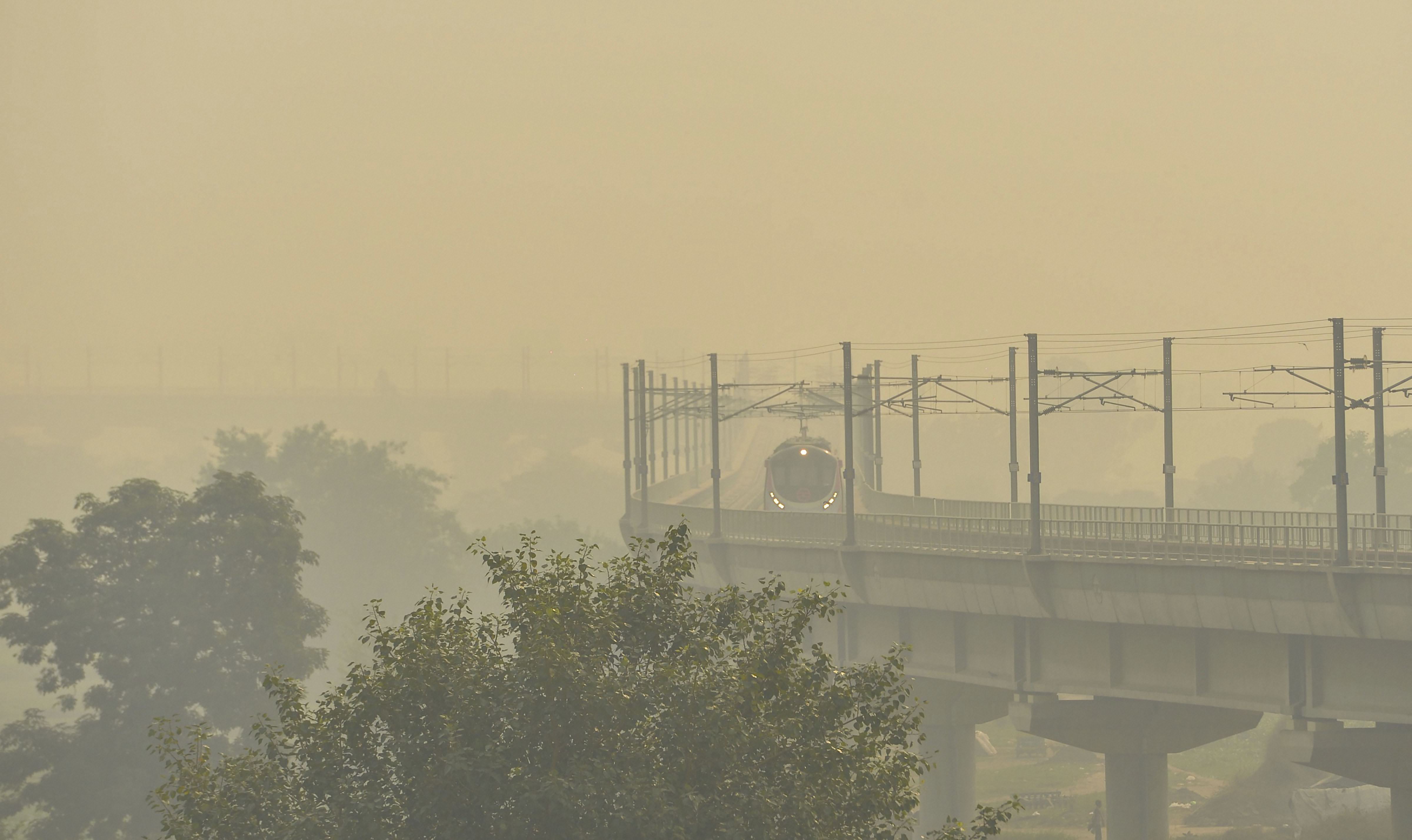
Air quality plunges to 'severe' category in several parts of Delhi

The air quality in New Deli deteriorated and came under the “severe” category in several parts of the city on Tuesday (October 29).
According to the Central Pollution Control Board, the city’s overall air quality index (AQI) at 12:30 pm was 390, which was marginally better than Monday’s high of 397 at 8 pm.
An AQI between 0-50 is considered good, 51-100 satisfactory, 101-200 moderate, 201-300 poor, 301-400 very poor, and 401-500 severe. Above 500 is a severe-plus emergency category.
Pollution levels in the satellite towns of Ghaziabad, Greater Noida, and Noida were very poor, with Ghaziabad at 429, Greater Noida at 418, and Noida at 427.

The air quality monitor SAFAR of Ministry of Earth Sciences showed that the levels of PM2.5 reached 740 in Delhi University, several hundred times higher than the 0-60 category considered “good”.
PM2.5 refers to tiny particulate matter less than 2.5 microns that can enter deep into the lungs.
Other areas of the city were no better. Anand Vihar was the most polluted area in the capital with an AQI of 436 and Nehru Nagar following with an AQI of 430.
Delhi’s air quality took a hit after on Diwali night due to a combination of firecracker emissions, stubble burning, and unfavourable meteorological conditions. Since then, pollution levels have been oscillating between the lower end and the higher end of the ‘very poor’ category.
Also read: Post Diwali, Delhi air quality drops to season’s worst
On Diwali night, a large number of revellers brazenly flouted the Supreme Court-enforced two-hour limit for bursting crackers. The Supreme Court had also ordered that only green firecrackers, which cause 30 percent less pollution, be manufactured and sold, but a DPCC official said that a large number of illegal crackers were burst on Diwali.
The Arvind Kejriwal government had organised a mega laser show in an effort to dissuade people from bursting crackers.
SAFAR said that an increase in the wind speed will help disperse pollutants and the pollution levels are expected to come down. However, officials at the Indian Meteorological Department said that a significant increase in the wind speed is unlikely over the next two days and similar conditions are expected to prevail.
The AQI takes into account five chief pollutants – particulate matter with a diameter less than 10 micrometres (PM10), PM2.5, ozone (O3), nitrogen dioxide (NO2), and carbon monoxide (CO).
The higher the AQI value, the greater the level of air pollution and the greater the health concern.


